
FiiO FH5 In-Ear Monitor Review
An Exit From The Entry Level: FiiO’s FH5 is a high-end IEM through and through.
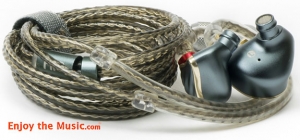
The FiiO brand is really synonymous with high bang-for-buck value in the personal audio world. For many people, FiiO is a launching pad – the first “audiophile” amp or DAC they ever own. For me personally, it was the FiiO E6 – just a tiny little pocket amp that was supposed be an improvement relative to my phone’s headphone jack. Viola, my first dedicated headphone amp!. I would later pick up the E17 amp/DAC, the E09K amplifier, X3 II DAP and finally X5 III DAP. For the most part all of these products shined at their price point.
In recent years, FiiO has been working to expand their portfolio to include a wide range of IEMs. The new FH5 ($259) is their most ambitious design to date, and has taken the place of the flagship in their growing lineup.
The FH5 is a 4-driver hybrid design with a 10mm polymer nanocomposite dynamic driver handling the low frequencies, a Knowles ED30262 balanced armature handing the midrange, and a pair of Knowles 31082 balanced armatures to handle the treble and ultra high frequency treble. These are contained in a beautiful precision-machined alloy shell that offers one of the best ergonomic fits of any universal shell I’ve encountered (more on that later).
While $259 is an extremely accessible price point, relative to most companies’ flagship IEMs, it is certainly a bold step up for a value driven company like FiiO, so it caught my interest. And I’m happy to say the FH5 most definitely continues FiiO’s tradition of delivering solid bang-for-buck products. From the moment I first opened the box, could tell the humbly-priced FH5 was going to over deliver, big time.
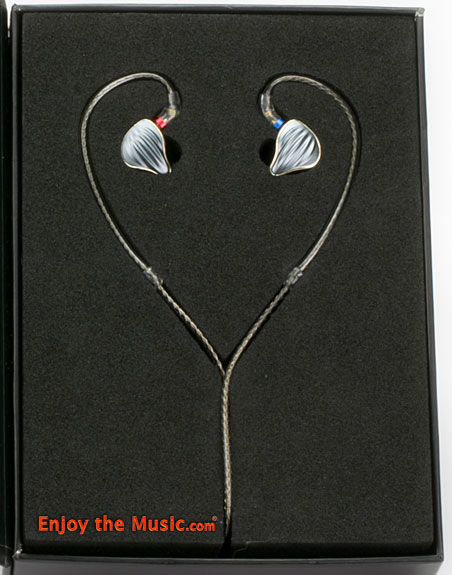
Holy Bells And Whistles!
The FH5 package is flush with bells, whistles and accessories. You get a hard shell case, a small soft case that fits easily in your pocket, a super premium cable, a cable keeper and a bevvy of ear tips that are meant to emphasize certain parts of the sound. The tip set includes sets of S/M/L tips for a balanced sound, S/M/L tips to emphasize vocals, S/M/L tips to emphasize bass response, and three sets of medium foam tips. A suites of accessories go, this one is pretty comprehensive.
One part that really surprised me about the FH5 was the quality of the cable, which is downright shocking at this price point. It’s a 1.2M cable made from high-purity monocrystalline silver-plated copper wire. Each channel’s wire is separately sealed in a polyurethane jacket. This is more along the lines of a cable I’d expect from an IEM in the $1000 range, certainly not $259. It oozes quality. The only catch to the cable is that it is a tad heavy and may swing around and bang against clothing. If you are wearing the FH5 at the gym, I recommend running the cable under your shirt to avoid hearing the cable pounding against your chest. That aside, I found it exceptional.
The cable connectors are also detachable MMCX type – one of the more common IEM connectors – which makes the FH5 compatible with many aftermarket IEM cables people may already have. This is good news if someone found the weight of the stock cable problematic or wanted to go wireless. The connectors are quite sturdy and easily accessible compared to my Westone W60, which seems ready to implode with even the most gentle-handed cable swap.

The FH5’s earpieces are also very impressive, with a form factor that is both comfortable and visually attractive. FiiO says the look was inspired by the streamliner vehicles of the 1930’s and 1940’s. The housings are smooth to the touch – free of any flat spots or pointy edges that may cause discomfort. Clearly a lot of thought went into the ergonomics of these earpieces. Left and right are also clearly marked on both the earpiece and cable. I feel like I shouldn’t even have to mention that, but half the IEM manufacturers out there still seem to falter when it comes to getting that right.
Overall, it is and extremely impressive package when it comes to build quality, presentation, fit and finish. It is a heck of a lot more than I would expect at $259, and we haven’t even touched the sound yet.
Let’s get to the fun part.
Fortune Favors The Bold
I’m going to cut to the chase here: the FiiO FH5 sounds good. Like really, really good. So good, in fact, I’m probably going to treat it a little unfairly by measuring it up against much more expensive benchmark competition. These are really only a couple small steps behind my beloved Campfire Vegas, which retail for nearly $1000 more. So while I’m going to point out several ways in which they are not perfect, it is because it is far easier to talk about the few areas that fall just short of perfection than the many ways in which the FH5 absolutely kills it. It’s the only way to drill down to how the FH5 is on an absolute level, regardless of price. So here we go.
The overall sound of the FiiO FH5 is fun and bassy with an extra bit of presence in the upper midrange. It is not a very neutral headphone, and shouldn’t be used as a reference piece in pro audio applications. It is a piece that is 100% made for listener enjoyment, and on that front, it absolutely delivers.
The bass is definitely the first thing that stands out about the FH5’s sound. It is full and robust with first-class impact and tactility. Sub-bass is especially prominent and well extended. The low bass rumble on hip-hop and electronic music is absolutely tectonic, and it’s kind of hard to argue a case for a more expensive IEM delivering more satisfaction in these genres.
Midbass is also slightly elevated, but less so than the sub-bass, following a gentle downward slope into the midrange. The level of punch here is very good, kick drums and toms hit with good tactile authority. Guitars have a big, beefy bottom end, especially acoustic guitars, which have excellent timbre and natural warmth. Those who prefer a more neutral sound will probably find this area too warm for their liking, but listeners who are looking for a fun sound are really going to love it.
The midrange is a bit of a mixed bag that people will either love or hate. It is certainly not ruler flat in terms of measurement, taking a pretty significant dip from the bass before peaking in the upper mids between 1kHz to 2kHz and then rolling off again. It’s kind of a “W” shaped response designed to give the FH5 a bold sense of presence to go with its weighty low-end punch.
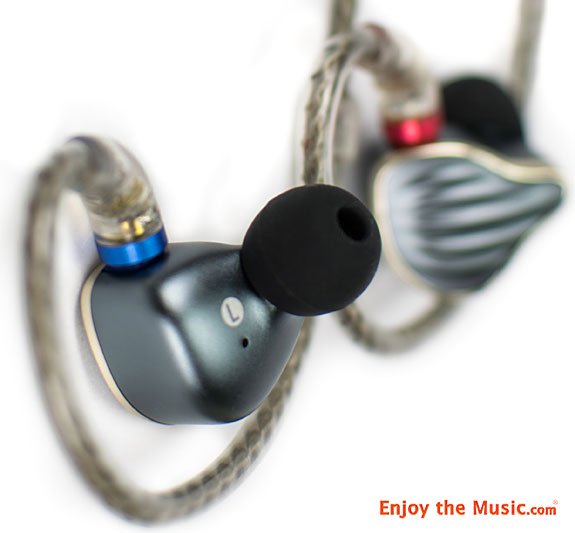
Given the elevated bass, the slope into the lower midrange feels pretty natural, and there is pretty good body here. It is clearly at a lower level than the bass and upper mids, but it is still in a place where it doesn’t feel thin.
The elevated upper mids give instruments a nice sense of immediacy, but can also result in a little bit of hardness as volume levels rise above maybe 85dB to 90dB or so. It can be especially problematic on songs with poor production, which can sound somewhat abrasive at times, even at reasonable volumes. That little bit of hardness is probably my biggest complaint about the sound of the FH5, but at the same time, it forces me to listen at a more reasonable volume, so it has been a little bit of a blessing in disguise. I found over time that I was less prone to let volumes creep up to excessive levels with the FH5, which is probably a good thing long term, but sometimes you want to turn it up, dang it! I’d rather have this region be a bit smoother, personally.
After that little bump, the frequency response drops down a bit through the midrange to treble transition. This is nice, because it keeps the FH5 from coming off as sibilant or strident. On the other hand, it would have been nice to have a little extra bite and edge on the instruments sometimes, which you tend to lose when you have too much recession here.
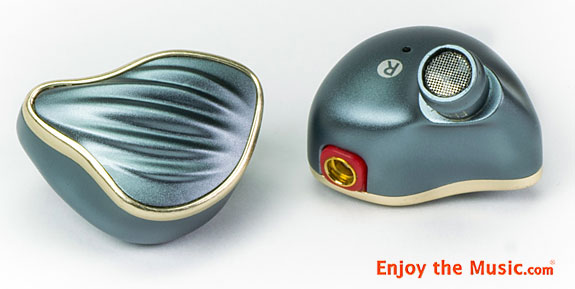
Overall, the midrange is pretty good, it is just a very specific type of coloration. If you like a little extra presence, but don’t want any stridence, it will definitely please you. If you’re looking something that is ruler flat, you’ll want to look elsewhere.
The treble is pretty mellow and smooth. Again, there is little to no sibilance as the mids pass into the lower treble. There is a bit of sparkle in the mid treble and then an average amount of air in the high treble. If I’m nitpicking, cymbals sometimes seem to lack a little bit of trebly bite on the edge, with more emphasis on the brassy body from that aforementioned peak down in the 1kHz to 2kHz area. This can leave cymbals sounding a touch quieter in the mix than they really are, but provided you’re not using the FH5 for music production, this shouldn’t really be a problem. I’m only really getting down into the nitty gritty here because the FH5 is so good overall.
Moving on to the more technical aspects of the sound, attack and decay sort of borrow the best parts of the balanced armatures and the dynamic drivers for an interesting and very likeable presentation. The attack is fairly crisp and lively up front with good immediacy and vibrancy. Decay is just slightly long adding a little bit of romanticism and naturalness without overstaying its welcome and getting muddy.
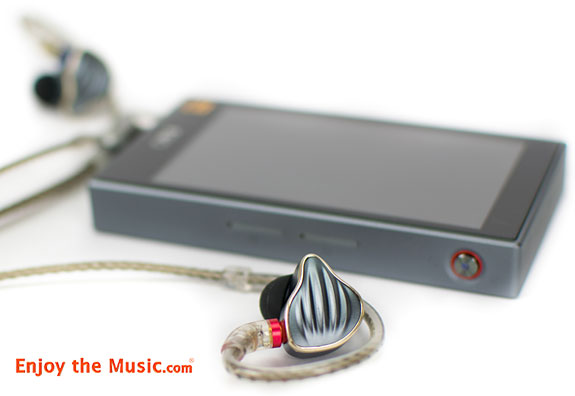
Detail retrieval is also very good for the humble price of $259. Inner resolution is better than the price would suggest overall, but seems to really show its best in the lower frequencies. Listening to “Long Distance Runaround” by Yes, Chris Squire’s bass resolution was very accurate, capturing the unique little specifics of his performance and his individual instrument. Steve Howe’s guitar licks and Bill Bruford’s steady high hats were slightly less impressive, sounding just very slightly generic relative to deep resolution of Squire’s bassline. These higher frequency sounds are probably closer to what I would expect for the price. My gut tells me this means the dynamic driver might be slightly more resolving than the balanced armatures, but it could also be that bit of coloration in the midrange coming into play, highlighting a more “crunchy” part of the sound of these instruments. I’m not sure. Again, I’m really nitpicking here, holding this up against my Stax Lambdas and the Campfire Vegas and Andromedas to suss out any weaknesses. Relative to similarly priced competition, the FH5 fares much better.
I’d place the stage size at about average with a good overall shape and well-defined imaging. Though the soundscape isn’t exceptionally expansive in terms of total size, it does a good job of staying uncongested, especially for a warm headphone. All that considered, I actually like the soundscape quite a bit. There is a certain intimacy to the stage, and combined with the warm sound and slight boost in the presence region, the FH5 has a very, very cohesive overall presentation.
I can’t stress the importance of this sense of cohesion enough, because I believe if a headphone is straying a bit farther than usual from neutrality, there should be a real purpose behind it. As these different elements and colorations come together as a whole, you get an idea that FiiO was really going for something very specific with the sound of the FH5. This is an IEM that wants to put you close to the music and really make you feel something. They say fortune favors the bold, and I respect the fact that FiiO has taken this IEM in some directions that are a bit off the beaten path to come up with something original.
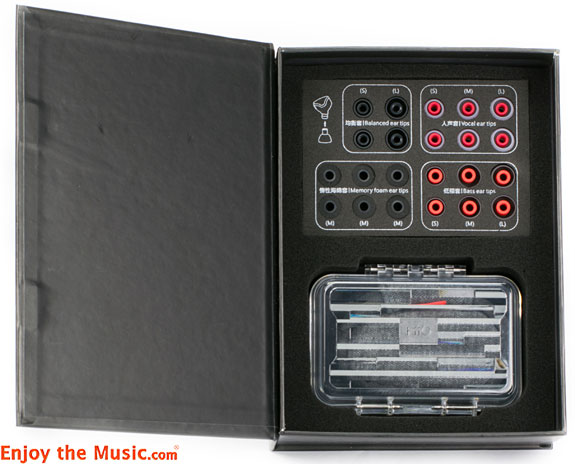
Final Thoughts
Overall, this is an IEM that I enjoy quite a bit. That little bit of hardness in the presence region can be bothersome on some songs, but most of the time I don’t notice it at all.
Because this one has some rather strong coloration in the midrange, I give it a bit of a conditional recommendation. It’s not going to be for everyone. But for those who want a more intense presentation that combines a big, full-bodied and warm sound with a strong sense of presence and an intimate overall feel, you are going to really love this IEM. It will put you very close to the music without feeling congested and the bang-for-buck value on it is really quite jaw dropping. You get a very complete package and excellent ergonomics to go with a really, really likeable sound. If that sound like something that fits for you, definitely give this one a listen.

Equipment Used During This Review
iPhone 6
Massdrop Cavalli Tube Hybrid
Monoprice Monolith Liquid Spark
HeadAmp Gilmore Lite Mk2
Chord Hugo 2
Schiit Yggdrasil
Acoustic Research AR-M2
FiiO X5 III
Campfire Audio Andromeda
Campfire Audio Vega
Westone W60
1MORE Quad Driver In-Ear
Periodic Beryllium
Stax SR-Lambda
Stax SRM-1 Mk II
DanaCable Onyx
DanaCable TruStream USB
AudioQuest Big Sur
Roon
Tidal HiFi
| Tonality |     |
| Sub–bass (10Hz – 60Hz) |     |
| Mid–bass (80Hz – 200Hz) |     |
| Midrange (200Hz – 3,000Hz) |    |
| High Frequencies (3,000Hz On Up) |     |
| Attack |     |
| Decay |     |
| Inner Resolution |     |
| Soundscape Width Front |     |
| Soundscape Width Rear |     |
| Soundscape Depth Behind Speakers |     |
| Soundscape Extension Into Room |     |
| Imaging |     |
| Fit And Finish |      |
| Self Noise |     |
| Value For The Money |     |
Specifications Type: Type: In-Ear Monitor
Drivers: One 10mm dynamic and three balanced armatures per side
Frequency Response: 15Hz to 40kHz
Sensitivity: 112dB/mW
Impedance: 19 Ohm
Maximum Input Power: 100mW
Earbud Weight: 8 grams
Cable Length: 1.2 meter
Cable Termination: 3.5mm
Cable Connector Type: MMCX
Price: $259
Company Information
FiiO
2/F, F Building, Hougang Industrial Zone,
Shigang Village, Huangshi West Road, Baiyun District,
Guangzhou City, 510430, China
Website: www.FiiO.com














Want to join discussion?
Feel free to contribute!